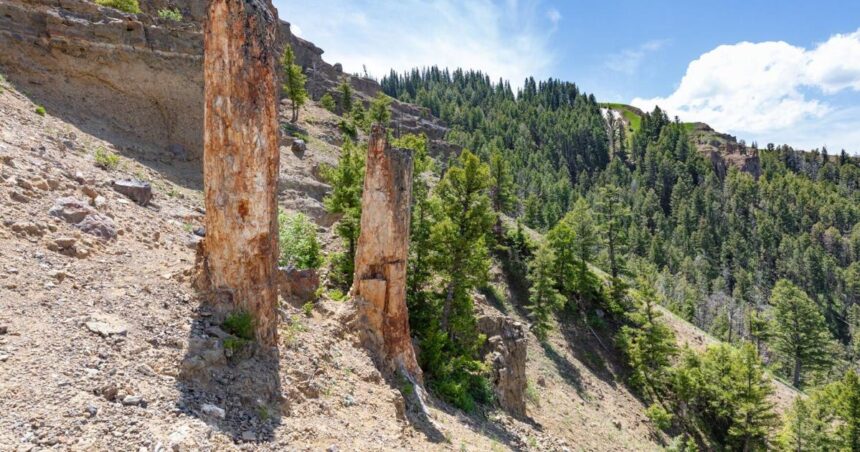Yellowstone Caldera Chronicles is a weekly column written by scientists and collaborators of the Yellowstone Volcano Observatory. This week’s contribution is from Shaul Hurwitz, research hydrologist with the U.S. Geological Survey.
When people think about silicon it is often associated with semiconductors used in various electronic devices, such as transistors, solar cells and integrated circuits. Silicon derives its name from the Latin silex or silicis, meaning “flint” or “hard stone,” because it is closely associated with rocks in the Earth’s crust where the element silicon is only exceeded in abundance by oxygen. In the crust, silicon typically bonds with oxygen to form silicon dioxide, or in short, silica (SiO2). Ancient civilizations used silica in a variety of applications. Sharp flints made of silica were among the first tools made by humans. Silica is common in sand on many beaches, is the main ingredient in the manufacturing of glass, is used in the production of concrete, and can be found in optical fibers for telecommunications, in cosmetic products and as an additive in food production. Silica is also essential for human health, is important for growth and development of rice, and silica deposition in plants (especially in grasses) provides a defense mechanism countering herbivore grazing and diseases.
People are also reading…
In Yellowstone, the large volumes of dilute rain and snowfall (meteoric water) that seep into the ground contain almost no silica. After percolating to depth, the water is heated by the underlying magma and mainly flows through layers of rhyolite, which is the most abundant rock in Yellowstone. Rhyolite contains a lot of silica — about 75% by weight. So, when the hot groundwater and rhyolite react, silica is removed from the rhyolite and dissolved into the water (similar to how water dissolves salt or sugar). Laboratory experiments, many of which were conducted by the late USGS scientist Bob Fournier and his colleagues, showed that the hotter the water, the more silica it can contain.
As it ascends towards the numerous hot springs in Yellowstone, the groundwater cools. The neutral to alkaline waters that are common in the geyser basins typically contain up to 400 milligrams of silica in one liter of water (equal to about 0.1 teaspoons of silica in a quart of water). Thus, a significant amount of silica is added to groundwater along its flow path between where it falls as snow or rain with nearly no silica and where it reemerges at the surface in hot springs.
When water flows away from a hot spring or erupts from a geyser it further cools and evaporates, and the amount of silica it can hold decreases. This leads to the precipitation of opal, which is an amorphous form of silica (a solid with no crystal structure). Through many thousands of years, opal crystalizes to form minerals that have the same chemical composition (SiO2), but have different crystal structures (polymorphs). The final mineral to be formed in the crystallization process is quartz, which is the most stable form of solid silica at room temperature.
Silica is found everywhere in Yellowstone. It forms the large geyser cones and sinter deposits that surround them, it was found on wood (referred to as “silicified”, “petrified” or “mineralized” wood) at Old Faithful and Steamboat Geysers, and in “Bobby Socks” trees (so named because they look as if they are wearing white socks) that have taken up silica-rich water and are common throughout the park’s geyser basins. In northeastern Yellowstone National Park, one can visit the fossil (silicified) trees of Specimen Ridge, where the remains of 50-million-year old trees with trunks up to 8 feet in diameter and some more than 20 feet tall stand on a steep hillside. In Yellowstone’s aquatic environments, an algae called a diatom, which is unique in that the walls of their cell are made of silica, is abundant. The discovery of a silicified bird in Norris Geyser Basin is another manifestation of the diverse silica deposits found in Yellowstone.
You may be reading this article on a silicon-powered electronic device. That is the same material that makes up Yellowstone’s geyser cones, petrified trees, and cells of some microscopic algae, that are all sourced from rhyolite — Yellowstone’s most abundant rock.





